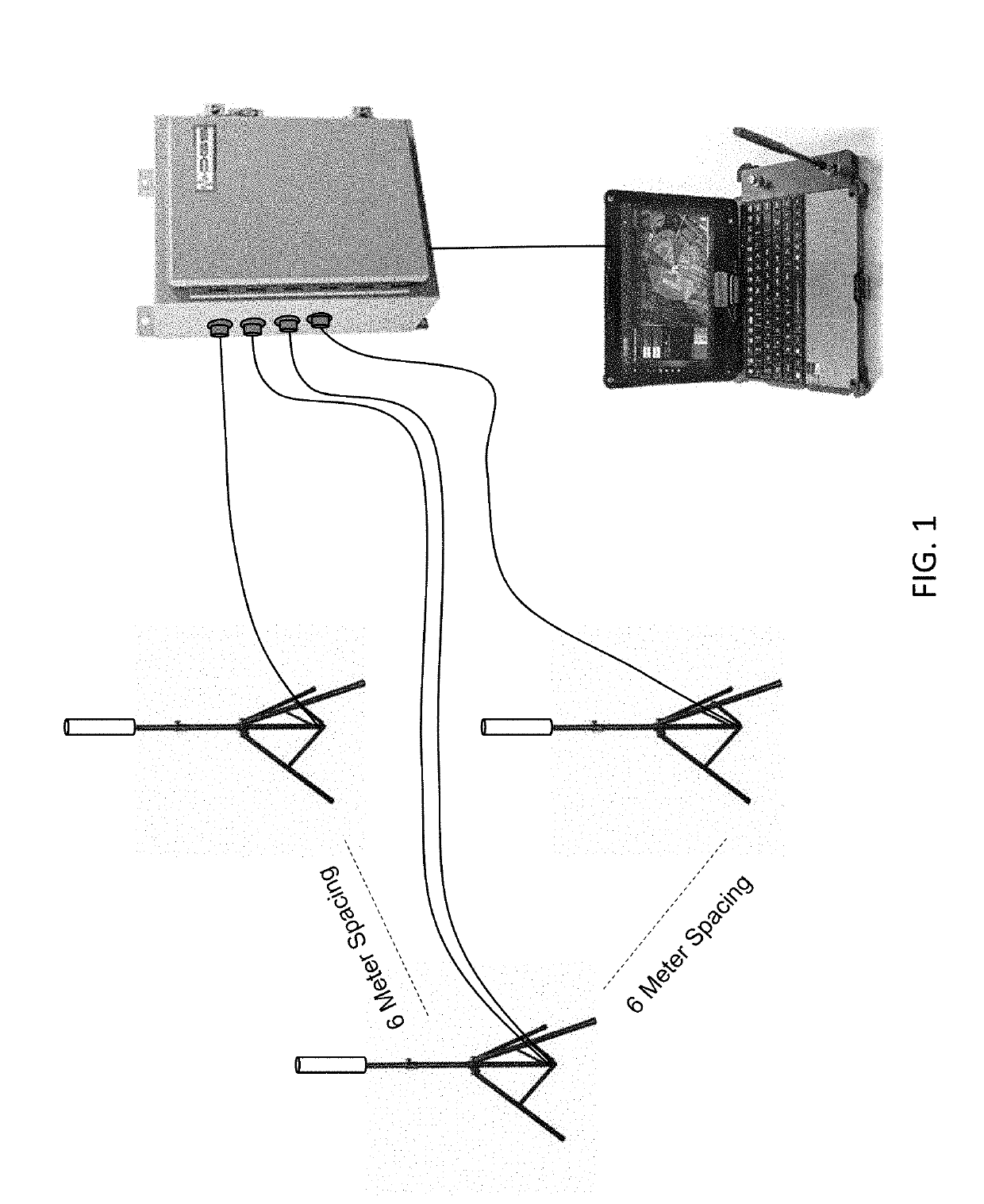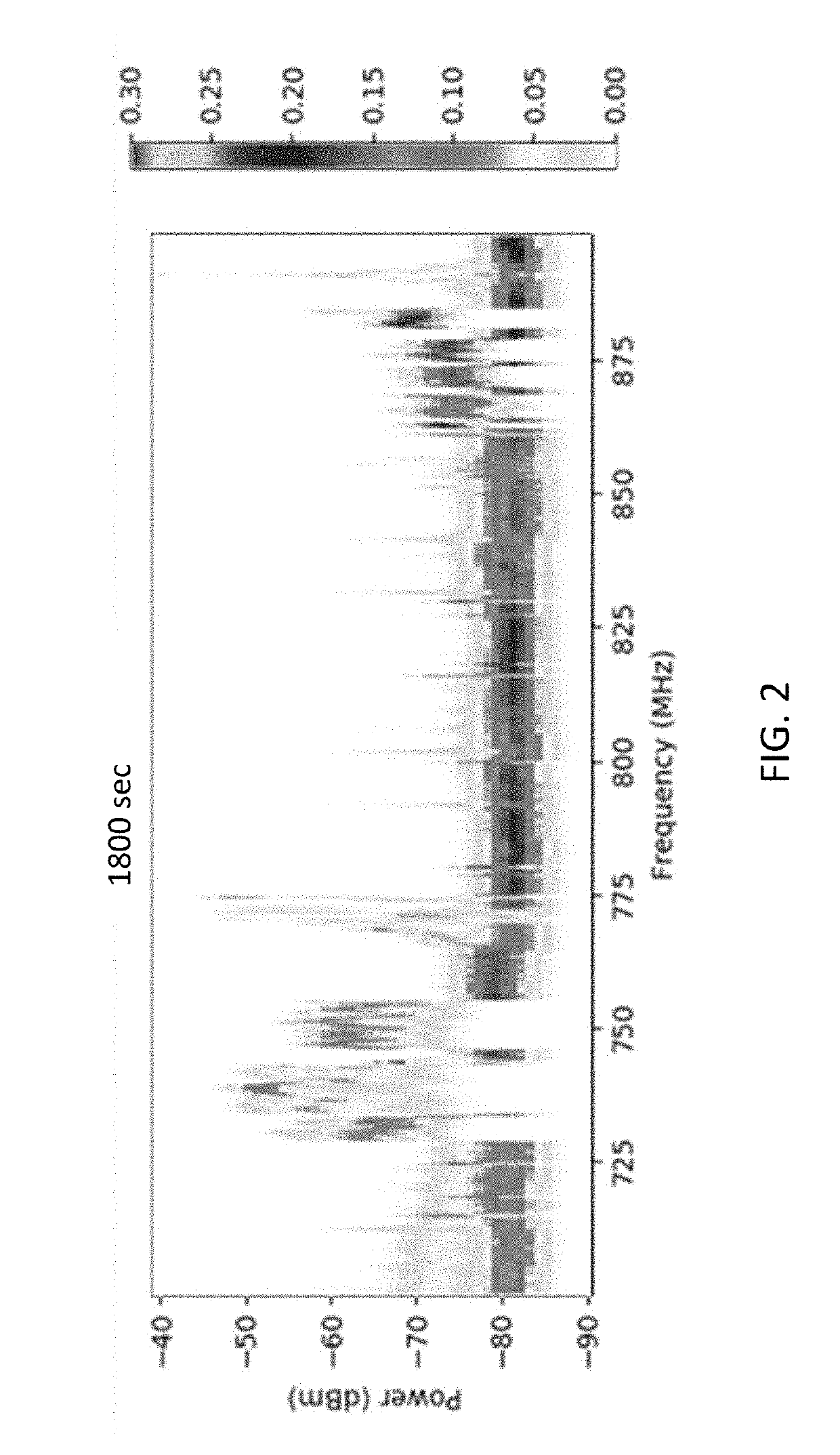Unmanned vehicle recognition and threat management
- Summary
- Abstract
- Description
- Claims
- Application Information
AI Technical Summary
Benefits of technology
Problems solved by technology
Method used
Image
Examples
Embodiment Construction
[0037]The present invention provides systems and methods for unmanned vehicle recognition. The present invention relates to automatic signal detection, temporal feature extraction, geolocation, and edge processing disclosed in U.S. patent application Ser. No. 15 / 412,982 filed Jan. 23, 2017, U.S. patent application Ser. No. 15 / 478,916 filed Apr. 4, 2017, U.S. patent application Ser. No. 15 / 681,521 filed Aug. 21, 2017, U.S. patent application Ser. No. 15 / 681,540 filed Aug. 21, 2017, and U.S. patent application Ser. No. 15 / 681,558 filed Aug. 21, 2017, each of which is incorporated herein by reference in its entirety.
[0038]Currently, commercial and retail UAVs dominate frequencies including 433 MHz industrial, scientific, and medical radio band (ISM Band) Region 1, 900 MHz ISM Band Region 1, 2, 3 (varies by country), 2.4 GHz (channels 1-14), 5 GHz (channels 7-165 most predominant), and 3.6 GHz (channels 131-183). Modulation types used by commercial and retail UAVs include Direct Sequenc...
PUM
 Login to View More
Login to View More Abstract
Description
Claims
Application Information
 Login to View More
Login to View More - R&D
- Intellectual Property
- Life Sciences
- Materials
- Tech Scout
- Unparalleled Data Quality
- Higher Quality Content
- 60% Fewer Hallucinations
Browse by: Latest US Patents, China's latest patents, Technical Efficacy Thesaurus, Application Domain, Technology Topic, Popular Technical Reports.
© 2025 PatSnap. All rights reserved.Legal|Privacy policy|Modern Slavery Act Transparency Statement|Sitemap|About US| Contact US: help@patsnap.com



